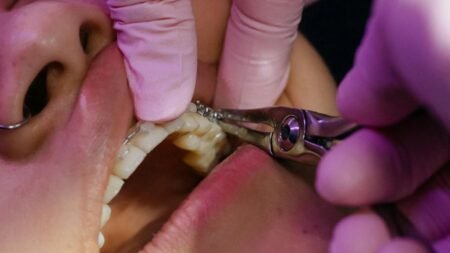Are you self-conscious about chipped or discolored teeth? Looking for an affordable and effective solution to enhance your smile? Look no further than teeth bonding. But what exactly is teeth bonding, and how can it transform your dental aesthetics?
In this comprehensive guide, we will delve into the world of teeth bonding, exploring its benefits, procedure, and associated costs. Discover how this cosmetic dental treatment can help you achieve the smile you’ve always dreamed of.
So, are you ready to unlock the secrets of teeth bonding? Let’s dive in and explore the wonders awaiting your smile!
What is Teeth Bonding?
Teeth bonding, also known as dental bonding, is a popular cosmetic dental treatment that can help enhance your smile. It is a minimally invasive procedure that involves applying a tooth-colored resin material to the surface of the teeth to improve their appearance and address certain dental imperfections.
Unlike other cosmetic dental procedures, such as veneers or crowns, teeth bonding does not require significant tooth preparation or the use of laboratory-fabricated restorations. Instead, it involves the direct application of a composite resin material to the tooth surface, which is then shaped, contoured, and polished to achieve the desired result.
The composite resin used in teeth bonding is made of a mixture of plastic and glass particles. This material is selected to closely match the color of your natural teeth, ensuring a seamless and natural-looking result. It can be used to address various dental issues, including:
- Minor chips or cracks
- Discoloration or staining
- Uneven tooth shape or size
- Gaps between teeth
The process of teeth bonding typically starts with the dentist preparing the tooth surface by lightly etching it and applying a conditioning liquid to promote the bonding of the resin material. The composite resin is then carefully applied to the tooth, molded into the desired shape, and hardened using a special curing light. Once the resin has hardened, the dentist will further shape and polish it to achieve a natural-looking result that blends seamlessly with your surrounding teeth.
Teeth bonding is a relatively quick and straightforward procedure that can usually be completed in a single dental visit. It offers several advantages, including its affordability, conservative nature, and versatility in addressing various cosmetic dental concerns. To learn more about the benefits of teeth bonding, continue reading.
Advantages of Teeth Bonding
Dental bonding, also known as cosmetic dental bonding, offers numerous benefits for individuals who want to enhance their smile. This procedure is a versatile solution for addressing a range of dental imperfections, including chipped, cracked, or discolored teeth. Let’s explore the advantages of dental bonding in more detail:
1. Improved Appearance
Dental bonding can effectively improve the appearance of teeth that have minor chips, cracks, or discoloration. The bonding material, which is composed of a tooth-colored resin, is carefully applied and shaped to match the natural tooth color, resulting in a seamless and natural-looking smile.
2. Quick and Painless Procedure
Unlike other cosmetic dental procedures, dental bonding is a relatively quick and painless treatment. The procedure can often be completed in one visit to the dentist, making it a convenient option for individuals with busy schedules.
3. Minimal Tooth Preparation
In most cases, dental bonding requires minimal tooth preparation. Unlike veneers or crowns that require significant enamel removal, bonding typically requires only a small amount of tooth structure to be removed, if any at all. This means that more of the natural tooth structure is preserved.
4. Versatility
Dental bonding is a versatile treatment option that can be used to address various dental imperfections. In addition to chipped or cracked teeth, bonding can also be used to close small gaps between teeth, reshape uneven teeth, and even cover exposed tooth roots caused by gum recession.
5. Cost-effective
Compared to other cosmetic dental procedures, dental bonding is a cost-effective option for improving the appearance of your teeth. The relatively low cost of bonding, combined with its versatility, makes it an attractive choice for many individuals seeking smile enhancements.
Overall, dental bonding offers several advantages for individuals looking to enhance their smile. Whether you have chipped teeth, gaps between your teeth, or want to improve the overall appearance of your smile, dental bonding can provide a quick, painless, and cost-effective solution.
| Advantages of Teeth Bonding |
|---|
| Improved Appearance |
| Quick and Painless Procedure |
| Minimal Tooth Preparation |
| Versatility |
| Cost-effective |
The Teeth Bonding Procedure
Are you considering a dental bonding procedure? Let us guide you through the step-by-step process, so you know exactly what to expect during your appointment.
Anesthesia Options
Prior to the bonding procedure, your dentist will discuss anesthesia options with you. In most cases, anesthesia is not necessary as dental bonding is a minimally invasive and painless procedure. However, if you have dental anxiety or a low pain threshold, your dentist may offer a local anesthetic to ensure your comfort throughout the treatment.
Tooth Preparation
Before the bonding process begins, your dentist will prepare the tooth or teeth that will undergo the procedure. This involves lightly roughening the surface of the tooth to create a strong bond with the dental resin. Your dentist may also remove a minimal amount of enamel to accommodate the bonding material.
The Bonding Process
Once the tooth is prepared, your dentist will apply a conditioning liquid that helps the dental resin adhere to the tooth. They will then sculpt and mold the tooth-colored resin onto the tooth, ensuring it matches the shape and contour of your natural teeth. The resin is then hardened using a special light, bonding it securely to the tooth’s surface.
“Dental bonding is a quick and straightforward procedure that typically takes about 30 minutes to an hour per tooth, depending on the complexity of the case. It is a great option for patients looking to improve the appearance of their teeth without the need for more invasive treatments.”
After the bonding process is complete, your dentist will make any necessary adjustments to ensure a comfortable bite and natural-looking result. The entire procedure is usually completed in a single dental visit, making dental bonding a convenient option for busy individuals seeking immediate aesthetic improvements.
Now that you have a better understanding of the teeth bonding procedure, you can feel confident and informed when visiting your dentist for this cosmetic dental treatment.
| Advantages of Dental Bonding | Disadvantages of Dental Bonding |
|---|---|
|
|
Costs of Teeth Bonding
When considering teeth bonding, it is important to understand the associated costs. The cost of dental bonding can vary depending on several factors, including the number of teeth that need to be bonded and any additional treatments that may be required.
The average cost of dental bonding for one tooth ranges from $100 to $400. However, it’s essential to note that this price can go up if multiple teeth require bonding. Additionally, the complexity of the case and the skill and experience of the dentist performing the procedure can influence the cost.
It’s worth mentioning that dental insurance may provide coverage for teeth bonding in certain cases. However, coverage can vary depending on your specific insurance plan. It is advisable to contact your insurance provider to understand the extent of coverage and any requirements or limitations.
For those without dental insurance, financing options may be available to help manage the cost of teeth bonding. Many dental clinics offer payment plans or financing arrangements to make dental procedures more affordable and accessible.
Factors Affecting Dental Bonding Cost
Several factors can influence the overall cost of teeth bonding:
- The number of teeth requiring bonding: The more teeth that need to be bonded, the higher the cost.
- Additional treatments needed: If there are other dental issues that need to be addressed alongside teeth bonding, such as teeth whitening or tooth fillings, the cost will increase.
- Geographical location: Dental prices can vary depending on the region or city you live in, with urban areas generally having higher costs.
- Dentist’s expertise and experience: Highly skilled and experienced dentists may charge more for their services.
It’s important to consult with a dentist to get an accurate estimate of the cost of teeth bonding based on your specific dental needs and circumstances.
| Number of Teeth | Average Cost |
|---|---|
| 1 | $100 – $400 |
| 2 | $200 – $800 |
| 3 | $300 – $1200 |
Finding a Dentist for Teeth Bonding
When it comes to dental bonding, finding a qualified dentist with expertise in the procedure is crucial. With the right dentist by your side, you can achieve optimal results and a beautiful, confident smile. Here are some tips to help you find the perfect dentist for your teeth bonding needs:
- Do your research: Start by researching local dentists who offer dental bonding services. Look for dental practices that specialize in cosmetic dentistry and have experience in performing bonding procedures.
- Check credentials: Verify the dentist’s credentials, qualifications, and professional memberships. Look for certifications or affiliations with reputable dental organizations that demonstrate their commitment to quality and continuing education.
- Read reviews: Take the time to read reviews and testimonials from previous patients. Pay attention to their experiences with dental bonding and whether they were satisfied with the results.
- Schedule a consultation: Contact the dentists on your shortlist and schedule a consultation to discuss your specific needs. This will give you an opportunity to meet the dentist, ask questions, and assess their communication skills and bedside manner.
- Ask about experience: During your consultation, inquire about the dentist’s experience with dental bonding. Ask how many bonding procedures they have performed and request to see before-and-after photos of previous patients.
- Consider comfort and convenience: Choose a dental practice that is conveniently located and offers a comfortable and welcoming environment. This will make it easier for you to attend appointments and feel relaxed during the dental bonding procedure.
By following these tips, you can find a dentist near you who is skilled in teeth bonding and can help you achieve the smile you’ve always wanted.
Maintaining Bonded Teeth
Proper care and maintenance are essential for maintaining the longevity and appearance of bonded teeth. By following a few simple steps, you can ensure that your bonded teeth stay healthy and beautiful for years to come.
1. Practice Good Oral Hygiene
To keep your bonded teeth in optimal condition, it’s crucial to maintain a regular oral hygiene routine. Brush your teeth at least twice a day with a soft-bristle toothbrush and fluoride toothpaste. Additionally, don’t forget to floss daily, paying extra attention to the areas around the bonded teeth. Adopting these habits will help prevent plaque buildup and keep your smile bright.
2. Avoid Staining Foods and Beverages
While bonded teeth are resistant to staining, they can still be affected by certain foods and beverages. Limit consumption of heavily pigmented substances such as coffee, tea, red wine, and dark-colored berries. If you do indulge in these items, rinse your mouth with water afterward to minimize the risk of staining. By making conscious choices, you can help preserve the natural color of your bonded teeth.
3. Be Mindful of Hard and Sticky Foods
Although bonded teeth are durable, they can be vulnerable to damage from hard or sticky foods. Avoid biting into hard candies, ice cubes, or popcorn kernels, as they can cause chips or fractures in the bonding material. Similarly, sticky foods like caramel or chewing gum can dislodge the bonding. If you cannot resist these treats, try cutting them into smaller pieces before consuming.
4. Attend Routine Dental Visits
Regular dental visits are crucial for maintaining the health of your bonded teeth. Schedule routine check-ups and cleanings with your dentist, who will examine your bonded teeth for any signs of wear, chipping, or discoloration. Professional cleaning will remove plaque and tartar buildup, ensuring that your bonded teeth remain in optimal condition.
By following these simple tips, you can maximize the lifespan of your bonded teeth and enjoy a confident smile. Remember to consult your dentist if you have any concerns or questions regarding the maintenance of your bonded teeth.

Exploring Alternatives to Teeth Bonding
If you’re considering teeth bonding, it’s important to explore alternative cosmetic dental procedures to ensure you make an informed decision about your smile enhancement. While teeth bonding offers numerous benefits, there are other options available that may better suit your specific needs.
One alternative to dental bonding is porcelain veneers. These thin, custom-made shells are bonded to the front of your teeth, improving their color, shape, and overall appearance. Veneers can effectively address various dental issues, including crooked teeth, gaps, and severe discoloration.
Another option to consider is teeth whitening. If your main concern is stained or discolored teeth, whitening treatments can help you achieve a brighter, more youthful smile. Whether through in-office procedures or take-home kits, teeth whitening is a popular and effective cosmetic dental solution.
For individuals seeking a more comprehensive transformation, orthodontic treatment such as braces or clear aligners may be worth exploring. These methods can correct misaligned teeth, overcrowding, and bite issues, resulting in a straighter and more harmonious smile.
FAQ
What is teeth bonding?
Teeth bonding, also known as dental bonding, is a cosmetic dental procedure that uses a tooth-colored resin material to improve the appearance of teeth. It involves applying the resin to the tooth, shaping it, and then hardening it with a special light to bond it securely to the tooth’s surface.
What are the benefits of teeth bonding?
Teeth bonding offers several benefits. It can repair chipped or cracked teeth, fill in gaps between teeth, change the shape or length of teeth, and improve the appearance of discolored or stained teeth. It is a cost-effective and relatively quick procedure compared to other cosmetic dental treatments.
How is the teeth bonding procedure performed?
The teeth bonding procedure involves several steps. First, the dentist will prepare the tooth by roughening its surface and applying a conditioning liquid. Then, they will apply the tooth-colored resin and mold it into the desired shape. Once the resin is in place, it will be hardened using a special light. Finally, the dentist will polish and smooth the bonded tooth for a natural-looking finish.
How much does teeth bonding cost?
The cost of teeth bonding can vary depending on factors such as the number of teeth being bonded, the complexity of the case, and the location of the dental office. On average, teeth bonding can range from $100 to $400 per tooth. However, it’s important to consult with a dentist to get an accurate cost estimate specific to your individual needs.
How long does teeth bonding last?
The durability of teeth bonding can vary depending on factors such as oral hygiene habits, diet, and lifestyle. With proper care, teeth bonding can last between 5 and 10 years. It’s important to avoid biting or chewing on hard objects and to maintain good oral hygiene practices to help prolong the lifespan of bonded teeth.
How do I find a dentist for teeth bonding?
To find a qualified dentist for teeth bonding, you can start by asking for recommendations from friends, family, or your regular dentist. You can also search online for dentists in your area who specialize in cosmetic dentistry. It’s important to schedule a consultation with the dentist to discuss your specific needs and expectations before moving forward with the teeth bonding procedure.
How do I maintain bonded teeth?
To maintain bonded teeth, it’s important to practice good oral hygiene habits, including brushing twice a day, flossing daily, and regular dental check-ups. Avoid biting or chewing on hard objects, such as ice or pen caps, as this can damage the bonded material. Additionally, be mindful of stain-causing foods and drinks and consider using a straw when consuming beverages that can discolor teeth.
What are alternative options to teeth bonding?
If teeth bonding is not the ideal solution for your dental needs, there are alternative cosmetic dental procedures to consider. These may include dental veneers, dental crowns, or orthodontic treatments such as braces or clear aligners. It’s best to consult with a dentist to determine which option is most suitable for your specific dental concerns.









2 Comments
Pingback: How Long Does Snow Teeth Whitening Last
I’ve been researching different cosmetic dental procedures lately, and this blog post on teeth bonding has been incredibly enlightening! The detailed explanation of the bonding tooth process, along with the impressive before-and-after photos, has truly captured my attention. It’s reassuring to learn about the versatility of bonding in addressing various dental imperfections, from chips to discoloration. The results showcased here are undeniably impressive and have definitely piqued my interest in exploring bonding tooth treatment further. Thank you for providing such valuable insights into this transformative dental procedure!